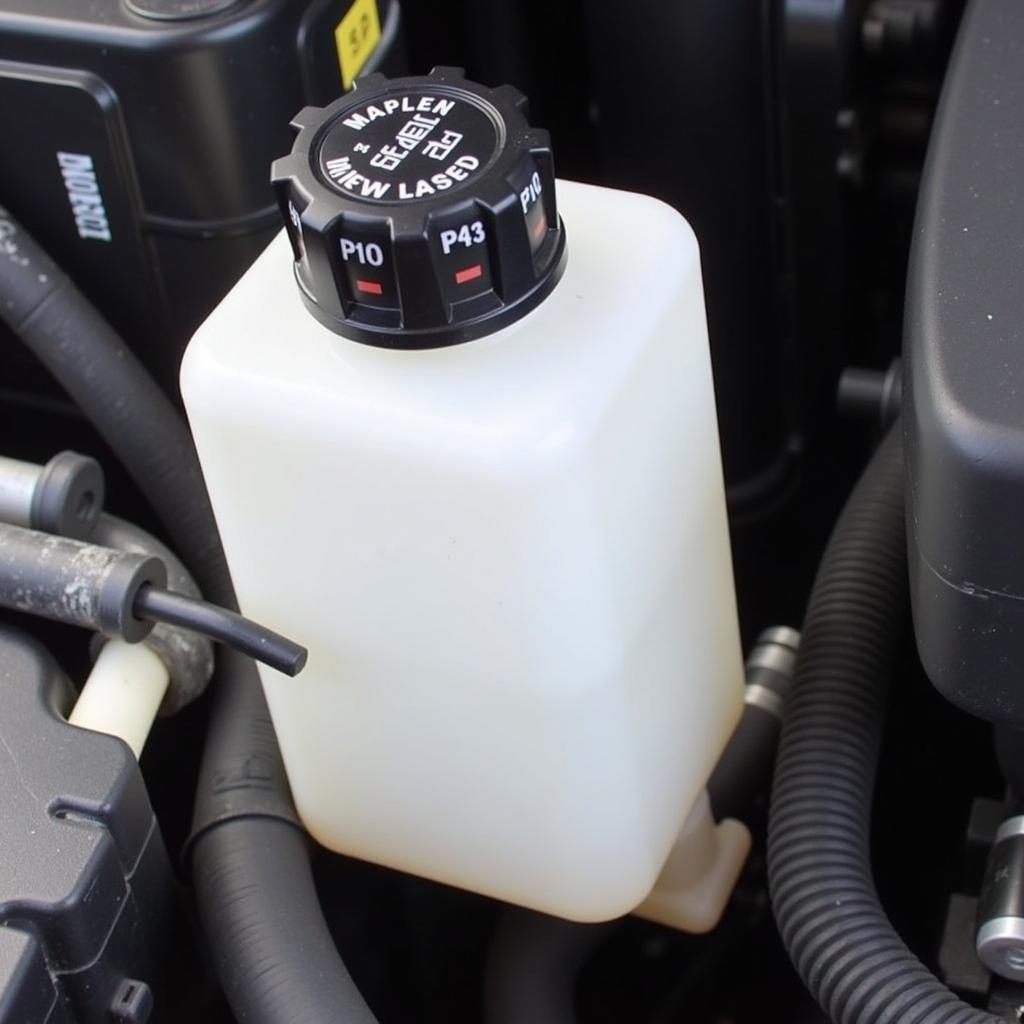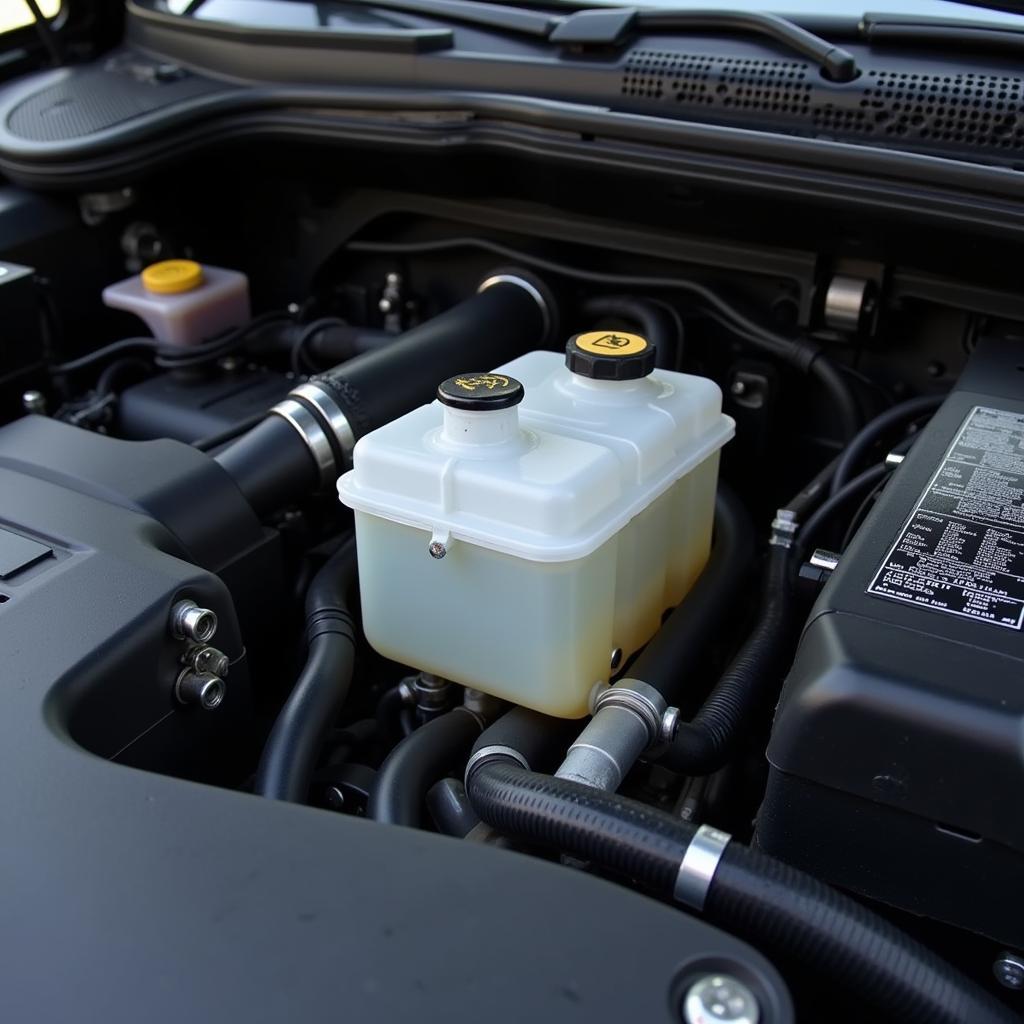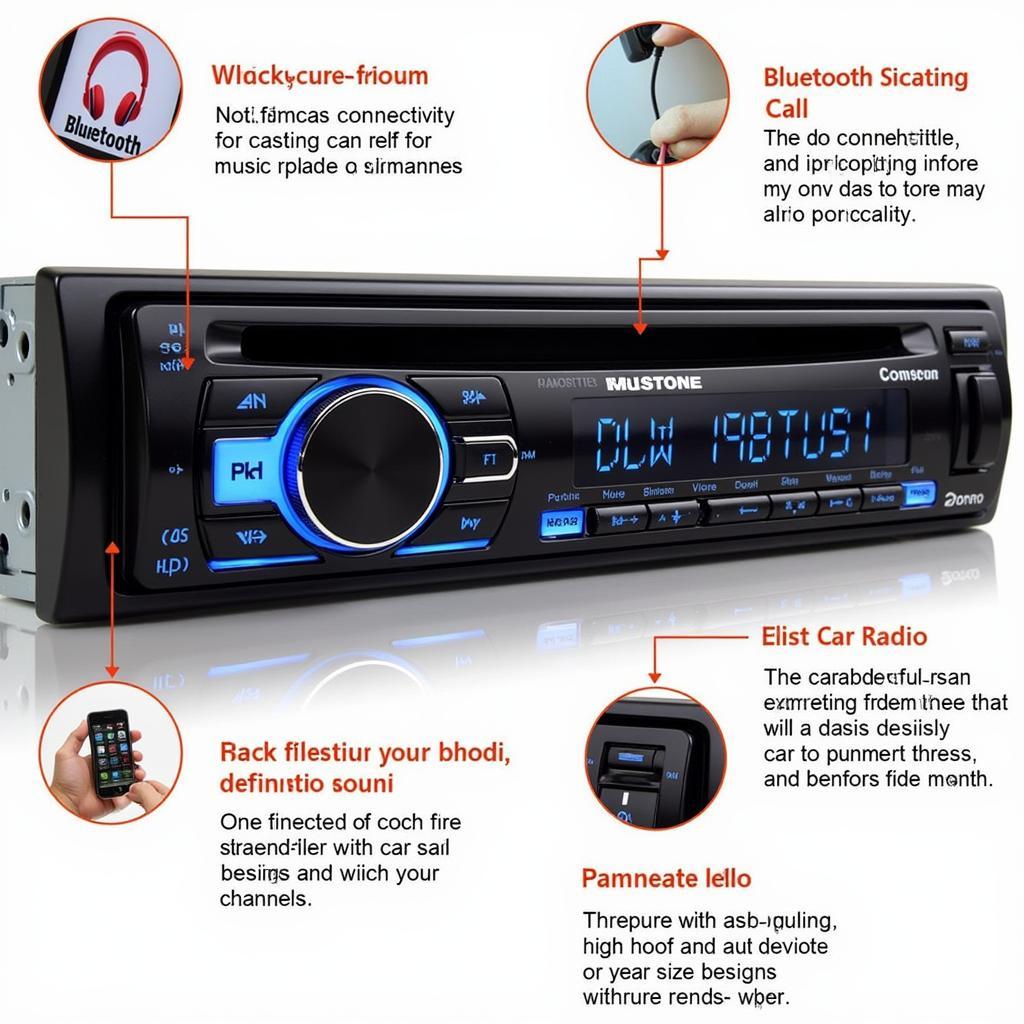The dreaded brake warning light on your 2015 Honda Civic can be a source of anxiety. Understanding why it illuminates and knowing how to address the issue is crucial for your safety and the longevity of your vehicle. This article provides a comprehensive guide to troubleshooting and resolving the brake warning light problem in your 2015 Honda Civic.
Understanding the Brake Warning Light
The brake warning light is part of your Civic’s braking system, designed to alert you to potential problems. It can indicate several issues, from low brake fluid to more serious malfunctions within the braking system. Ignoring this warning light can lead to costly repairs and compromise your safety on the road.
Common Causes of a 2015 Honda Civic Brake Warning Light
Several factors can trigger the brake warning light in your 2015 Honda Civic. Identifying the root cause is the first step towards a solution.
Low Brake Fluid
One of the most common culprits is low brake fluid. Brake fluid is essential for transmitting the force from your foot to the brake pads, enabling your car to stop. Over time, brake pads wear down, and the fluid level naturally drops. However, a sudden drop can indicate a leak, which requires immediate attention.
Worn Brake Pads
Brake pads are designed to wear down over time. When they become too thin, the brake warning light will illuminate, indicating they need replacing.
Faulty Brake Sensor
Your 2015 Honda Civic is equipped with brake pad wear sensors. These sensors trigger the warning light when the pads reach a certain thickness. Sometimes, these sensors can malfunction, causing the light to come on even when the brake pads are still good.
ABS Issues
The Anti-lock Braking System (ABS) plays a crucial role in preventing wheel lockup during hard braking. If there’s a problem with the ABS module, a sensor, or the wiring, the brake warning light might illuminate.
 Checking the brake fluid reservoir in a 2015 Honda Civic
Checking the brake fluid reservoir in a 2015 Honda Civic
Troubleshooting the Brake Warning Light
Here’s a step-by-step guide to help you diagnose the problem:
-
Check the Brake Fluid Level: Open the hood and locate the brake fluid reservoir. The level should be between the minimum and maximum marks. If it’s low, add the correct type of brake fluid specified in your owner’s manual.
-
Inspect the Brake Pads: Visually inspect your brake pads through the wheel spokes. If they appear thin or worn, they likely need replacement.
-
Check for Leaks: Look for any signs of brake fluid leaks around the brake lines, calipers, and master cylinder. Leaks require professional attention.
-
Scan for Diagnostic Trouble Codes (DTCs): A diagnostic scan tool can pinpoint specific issues within the ABS or other braking system components.
Why is my Honda Civic 2015 brake warning light on?
The brake warning light can illuminate for various reasons, such as low brake fluid, worn brake pads, a faulty brake sensor, or issues with the Anti-lock Braking System (ABS).
What should I do if the brake warning light comes on in my 2015 Honda Civic?
If the light comes on, safely pull over and check the brake fluid level. If it’s low, add brake fluid. If the light persists, have a qualified mechanic inspect your brakes.
Can I drive my 2015 Honda Civic with the brake warning light on?
Driving with the brake warning light on is risky. While you might still be able to brake, the system’s effectiveness could be compromised. It’s crucial to have the issue addressed promptly.
“Regular brake inspections are vital for preventing unexpected issues,” says Michael Davis, a senior automotive technician with over 20 years of experience. “Don’t wait for the warning light to come on before addressing your brake system.”
How much does it cost to fix a brake warning light issue on a 2015 Honda Civic?
The cost depends on the underlying problem. It could range from a simple top-up of brake fluid (under $10) to a more expensive brake pad replacement or ABS repair (several hundred dollars).
“Addressing brake issues promptly can prevent further damage and save you money in the long run,” adds Davis. “Regular maintenance and timely repairs are key to maintaining a safe and reliable braking system.”
Conclusion
Addressing the brake warning light in your 2015 Honda Civic is crucial for your safety and the health of your vehicle. By understanding the common causes and following the troubleshooting steps outlined in this article, you can quickly diagnose and resolve the issue. If you’re unsure about any step or if the problem persists, seek professional assistance from a qualified mechanic. Don’t ignore the honda civic 2015 brake warning light – address it promptly to ensure safe and reliable braking performance.
FAQ
-
How often should I check my brake fluid? Check your brake fluid level at least once a month, or as recommended in your owner’s manual.
-
How long do brake pads typically last? Brake pad lifespan varies depending on driving habits and conditions, typically lasting between 25,000 and 70,000 miles.
-
What type of brake fluid should I use in my 2015 Honda Civic? Consult your owner’s manual for the correct type of brake fluid. Using the wrong type can damage the braking system.
-
Is it safe to drive with low brake fluid? Driving with low brake fluid is dangerous as it can reduce braking effectiveness.
-
What does the ABS light mean? The ABS light indicates a potential problem with the Anti-lock Braking System.
-
Can I replace my brake pads myself? Replacing brake pads requires some mechanical knowledge. If you’re unsure, consult a professional mechanic.
-
How can I prevent premature brake wear? Avoid hard braking, maintain proper tire pressure, and have your brakes inspected regularly.


